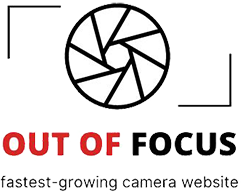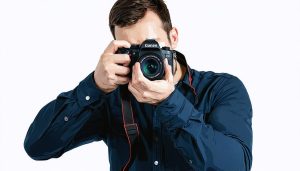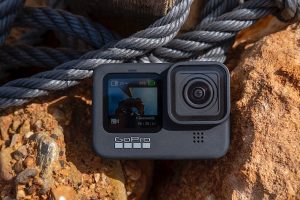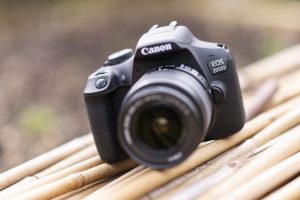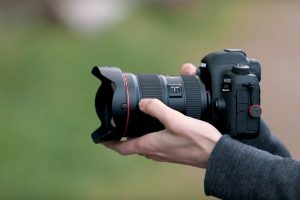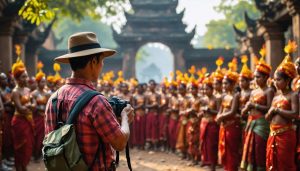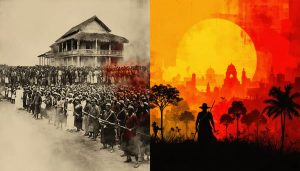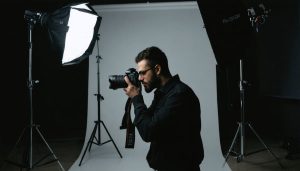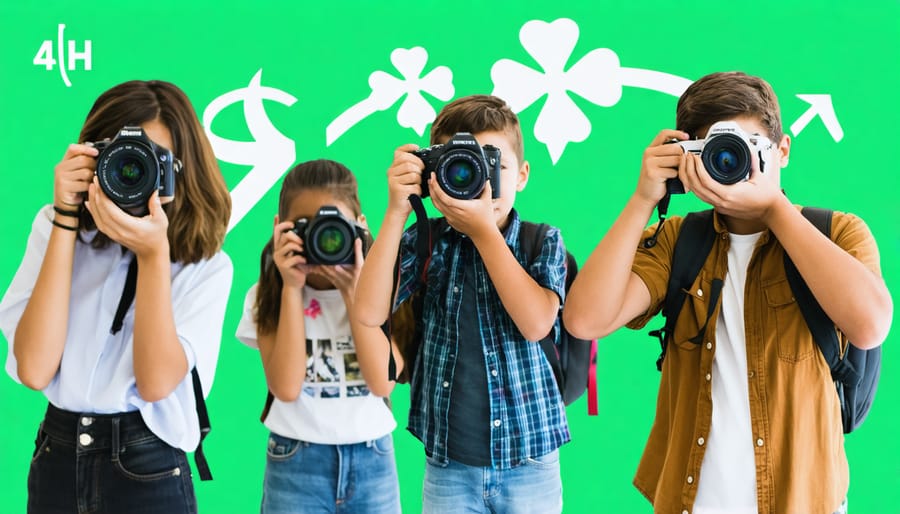
Transform young photographers through 4-H’s comprehensive photography curriculum, where structured learning meets creative expression. This nationally recognized program builds both technical skills and artistic vision, guiding youth from basic camera operations to advanced composition techniques through hands-on projects and real-world applications.
The curriculum’s three-tiered approach – beginning, intermediate, and advanced – ensures systematic skill development while nurturing individual creativity. Each level incorporates essential photography fundamentals with age-appropriate challenges, community service opportunities, and leadership development – core elements that distinguish 4-H’s educational approach.
Young photographers progress from understanding basic equipment handling to mastering complex lighting techniques, digital editing, and professional presentation methods. Through carefully designed projects, participants develop not just photography skills, but also critical thinking, problem-solving abilities, and self-expression – vital components for both personal growth and potential career paths in visual arts.
Whether capturing nature’s beauty, documenting community events, or telling visual stories, 4-H’s photography curriculum provides a solid foundation for aspiring photographers while fostering the organization’s mission of hands-on learning and youth empowerment. This comprehensive program creates a pathway for youth to explore, learn, and excel in the dynamic world of photography.
Building on Basic Photography Foundations
Skills Assessment and Progress Tracking
The 4-H photography curriculum incorporates a comprehensive skills assessment framework to help young photographers track their development. Students begin with a baseline evaluation covering essential photography skills, including composition, lighting, and technical camera operation.
Progress tracking utilizes a combination of self-assessment checklists, peer reviews, and mentor evaluations. Participants maintain digital portfolios showcasing their best work, accompanied by reflection journals documenting their learning experiences and areas for improvement. These portfolios serve as visual timelines of skill development throughout the program.
Regular critique sessions provide constructive feedback, helping students identify strengths and weaknesses in their work. Achievement badges and skill-level certifications mark significant milestones, motivating continued growth. The curriculum includes quarterly assessment points where students review their progress against predefined learning objectives.
Photography challenges and assignments come with clear rubrics, allowing participants to understand expectations and measure their success. This structured approach ensures steady advancement while maintaining enthusiasm for the craft.
Advanced Camera Controls
In this advanced segment of the curriculum, students will learn to master your camera settings through hands-on exercises and real-world challenges. The focus shifts from automatic modes to full manual control, teaching young photographers how to master manual mode with confidence.
Students will explore the exposure triangle – aperture, shutter speed, and ISO – understanding how these elements work together to create perfectly exposed images. Through practical exercises, they’ll learn to control depth of field for stunning portraits, freeze action for sports photography, and capture dramatic low-light scenes.
The curriculum includes creative exposure techniques such as intentional motion blur, multiple exposures, and HDR photography. Participants will also learn to read histograms, use exposure compensation, and work with different metering modes to handle challenging lighting situations.
Each lesson builds upon previous knowledge, incorporating real-world scenarios that students might encounter in their photography journey, from capturing indoor events to photographing landscapes in varying weather conditions.
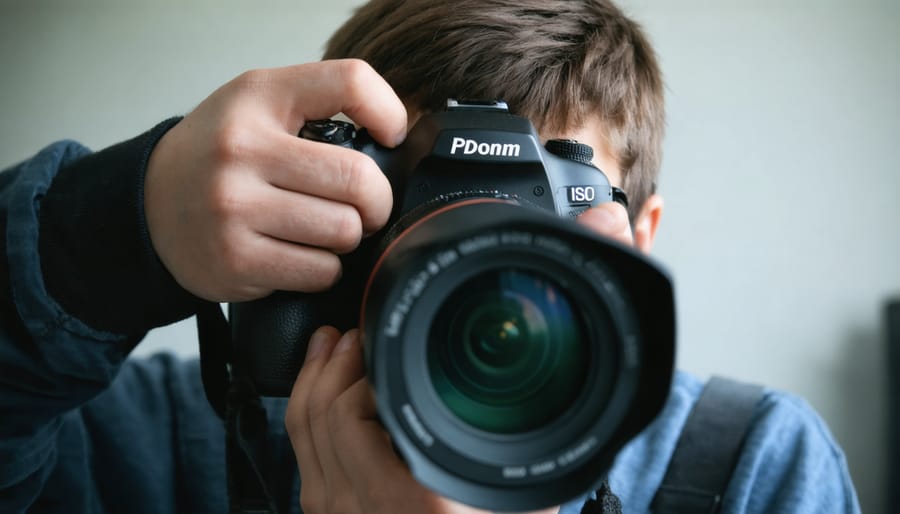
Creative Composition Techniques
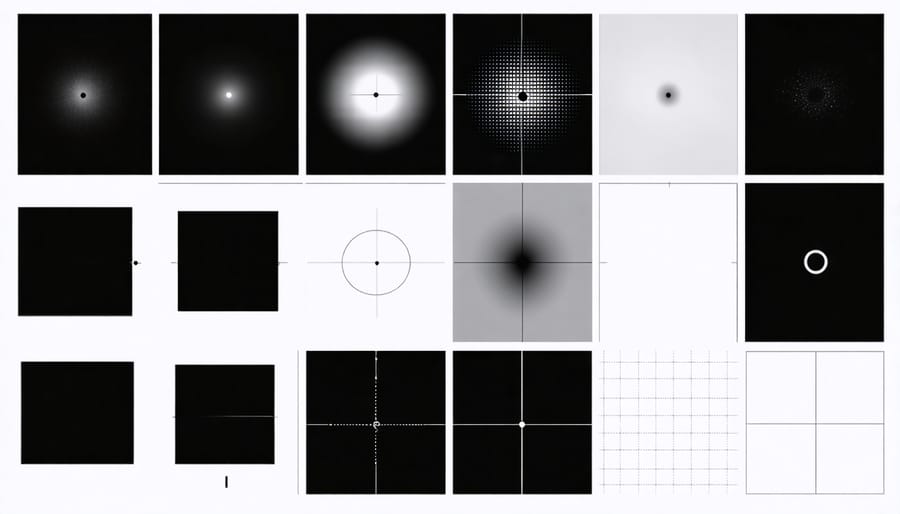
Beyond the Rule of Thirds
While the Rule of Thirds provides a solid foundation for composition, advanced photographers understand that creativity often means knowing when to break the rules. Think of these guidelines as starting points rather than strict laws. When you’re comfortable with mastering light in photography and basic composition, you can explore more dynamic approaches.
Consider centered composition, which can create powerful symmetrical images or emphasize isolation. The golden ratio, while more complex than the Rule of Thirds, can lead to naturally pleasing compositions that feel more sophisticated. Dynamic tension, created by diagonal lines or unconventional subject placement, can add drama and movement to your images.
Don’t be afraid to experiment with negative space, which can create emotional impact and draw attention to your subject in unexpected ways. Leading lines don’t always need to follow conventional patterns – sometimes, breaking the expected flow can create intriguing visual narratives.
Remember that great photography often comes from understanding the rules deeply enough to know exactly when and why to break them. Start by mastering traditional composition techniques, then gradually introduce creative variations. Document your experiments and analyze what works and what doesn’t. This process of intentional rule-breaking will help develop your unique photographic style and vision.
Creating Visual Stories
Visual storytelling through photography is a powerful way to convey emotions, experiences, and narratives without words. In the 4-H photography curriculum, students learn to create compelling photo essays by developing a clear narrative structure and selecting images that work together to tell a cohesive story.
The foundation begins with storyboarding, where young photographers plan their visual narrative by sketching out key shots and organizing their ideas. They learn to identify establishing shots that set the scene, detail shots that add depth, and decisive moments that capture the heart of the story.
Students practice sequencing techniques, understanding how the order of images affects the narrative flow. They explore different storytelling approaches, from documentary-style day-in-the-life sequences to themed collections that explore specific concepts or issues important to their communities.
The curriculum emphasizes the importance of emotional connection in visual storytelling. Participants learn to capture authentic moments, facial expressions, and body language that convey feeling and meaning. They also study how different photographic techniques – like varying angles, perspectives, and compositions – can enhance the story’s impact.
Projects often focus on local events, family traditions, or community service activities, allowing students to document meaningful stories while developing their technical and creative skills. Through peer review sessions, students learn to edit and curate their work, selecting the strongest images that best support their narrative vision.
Practical Projects and Assignments
Portfolio Development
Building a strong photography portfolio is a crucial part of the 4-H photography curriculum, helping young photographers showcase their best work and track their progress. Start by selecting 10-15 of your strongest images that demonstrate various techniques and subjects you’ve mastered. Include a mix of different photography styles, such as portraits, landscapes, macro shots, and action photography.
Create a cohesive narrative with your portfolio by organizing images thematically or chronologically. Each photograph should be accompanied by a brief description detailing the technical aspects (camera settings, lighting conditions) and the story behind the image. This helps demonstrate both your technical knowledge and creative vision.
Consider including before-and-after examples of edited photos to showcase your post-processing skills. Digital portfolios can be created using platforms like Google Photos or Adobe Portfolio, while physical portfolios should use high-quality photo paper and proper mounting techniques.
Regular portfolio reviews with your 4-H leader or mentor will help identify areas for improvement and growth. Update your portfolio quarterly, replacing weaker images with newer, stronger work as your skills develop. Remember to maintain both digital and physical copies of your portfolio for different presentation scenarios.
For 4-H competitions and exhibitions, ensure your portfolio meets specific submission guidelines regarding size, format, and presentation. Include any awards or recognition your photos have received, as well as any photography-related community service projects you’ve participated in through 4-H.
Real-World Photography Challenges
The 4-H photography curriculum incorporates real-world challenges that mirror situations photographers encounter in their professional careers. These assignments progressively build essential skills while maintaining engagement through practical application.
Students begin with basic documentary assignments, such as capturing community events or local festivals, where they learn to work under time constraints and changing lighting conditions. They’re tasked with telling complete visual stories through a series of images, helping develop their narrative skills and photographic eye.
Environmental portrait challenges teach participants to interact with subjects while managing technical aspects of photography. Students photograph local business owners, farmers, or community leaders in their natural settings, learning to balance composition with interpersonal communication.
Nature and wildlife photography assignments push students to practice patience and timing, often requiring early morning shoots or careful planning around weather conditions. These challenges teach adaptation to unpredictable situations while emphasizing the importance of ethical wildlife photography practices.
Advanced projects include event coverage, where students work in teams to photograph school sports, theatrical productions, or county fairs. These assignments simulate professional workflows, including client communication, deadline management, and post-processing efficiency.
Each challenge includes reflection components where students discuss their experiences, technical difficulties encountered, and solutions developed, fostering critical thinking and problem-solving skills essential for real-world photography success.
Exhibition and Competition Preparation
Presentation Techniques
Effective presentation of photographs is crucial for showcasing your work and engaging your audience. Start by selecting a cohesive collection of images that tell a story or share a common theme. When mounting photos, use acid-free materials and ensure consistent spacing between images. Traditional matting with neutral colors can enhance the visual impact while drawing attention to the photograph itself.
For digital presentations, maintain consistent image sizes and resolution across your portfolio. Consider creating both physical and digital portfolios, with mounted prints for in-person viewing and optimized digital files for online sharing. When displaying multiple images, arrange them in a logical sequence that guides viewers through your narrative.
Label your photographs professionally with essential information such as title, date, and technical details. For competitions or exhibitions, follow specific guidelines for presentation formats. Remember that lighting plays a crucial role – avoid direct sunlight for physical displays and ensure proper monitor calibration for digital presentations.
Create engaging captions that provide context without overshadowing the visual impact. Consider interactive elements for digital displays, such as before-and-after sliding comparisons or themed galleries that viewers can explore.

Judging Criteria Understanding
In intermediate 4-H photography competitions, judges evaluate entries based on several key criteria. Technical execution takes center stage, with judges looking for proper exposure, sharp focus, and effective composition following the rule of thirds. Image quality and clarity are paramount, including the absence of distracting elements and appropriate depth of field.
Creativity and storytelling ability become increasingly important at this level. Judges assess how well the photographer uses lighting, angle, and perspective to convey their intended message or emotion. They also evaluate the photographer’s ability to capture decisive moments and create visual interest through unique viewpoints.
Subject matter selection and presentation play crucial roles. Judges consider whether the chosen subject effectively demonstrates the category’s requirements and if the photographer shows understanding of their subject through thoughtful framing and timing.
Post-processing decisions are also scrutinized, with judges looking for appropriate editing that enhances rather than overwhelms the image. Natural-looking adjustments to contrast, color, and sharpness are generally preferred over heavy-handed manipulation.
Finally, presentation matters – judges evaluate print quality, mounting technique, and whether the overall presentation complements the photograph’s subject matter and mood.
The intermediate 4-H photography curriculum offers a comprehensive foundation for young photographers to develop both their technical skills and creative vision. Through structured lessons, hands-on projects, and collaborative learning experiences, participants gain confidence in their abilities while building a strong understanding of photography principles that will serve them well into the future.
The curriculum’s emphasis on both artistic expression and technical mastery ensures that students emerge with a well-rounded skill set. From mastering manual camera controls to developing an eye for composition, participants are equipped with tools that extend far beyond basic snapshot photography. The program’s focus on project-based learning and real-world applications helps students develop practical skills they can use in various settings, whether pursuing photography as a hobby or considering it as a potential career path.
As students complete the intermediate curriculum, they’re well-positioned to move forward with their photographic journey. Many graduates continue to advanced 4-H photography programs, participate in photography competitions, or apply their skills to school yearbook committees and local community projects. Some even begin exploring photography as a business venture, offering their services for events or portraits.
For those looking to continue their development, the next steps might include mentoring younger photographers, pursuing specialized workshops, or creating a photography portfolio. The skills and confidence gained through this curriculum provide a solid stepping stone to these and many other opportunities in the world of photography.
